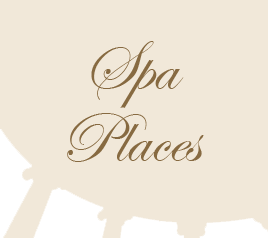Categories
In 1853, the owner of the Engel Apotheke pharmacy in Homburg, Dr. Julius Hoffmann, built a cold-water sanatorium in his garden at the “Pfingstbrunnen” spring near the Tannenwald Allee Road. The property was suited for this kind of spa facility, because a deep trench and a fresh stream flowing through it. The natural slopes of the land allowed for many different kinds of showers and baths. In 1859, for several years it was owned by the Landgrave's Privy Councilor Georg Ferdinand Fenner, who operated it under the medical direction of spa physician Dr. Wilhelm Deetz and sold it to the spa physician Dr. Eduard Friedlieb in 1864. The 1870s, the establishment was faced with strong competition: The Darmstadt physician Dr. Wilhelm Zimmermann had set up a spa facility at Dorotheenstraße 45, which offered cold baths and showers as well as massages and physical therapy. Advertisements for the older facility at the Pfingstbrunnen spring now focused mainly on the romantic park facility, to which now a small café had been added. Dr. Friedlieb died in 1878, and the spa facility was taken over by Head Physician Dr. Ludwig Becker and retired Captain Ernst Dedo von Bassewitz. Although the new owners initially invested in comprehensive renovations, the spa facility at the Pfingstbrunnen spring could not stand up to its competitors in the city center, and when the café license was not extended in 1884, Becker and von Bassewitz sold the property to Frankfurt businessman Louis Krebs-Pfaff, who built a summer retreat there. The building at Mariannenweg 11 is probably the last remaining building of the old cold-water spa facility.
Illustrations (titles and descriptions in German)
1850er Jahre
(Plans, Outlines, Drawings)
1850er Jahre
(Plans, Outlines, Drawings)
1850er Jahre
(Plans, Outlines, Drawings)
Building History
- Construction
- 1852
- Mention
- 1852
- Demolition
- 1885
Location
Networking
Follow the links below to display similar records from Spa Places.
- Subject Area
- Social and Health
- Funding
- private
- Keywords
- Public pools Coffee houses
References
Literatur:
Averbeck, Von der Kaltwasserkur
Friedlieb, Der Kurort
Friedlieb, Pharmakodynamische Bedeutung
Friedlieb, Station minérale
Friedlieb, The Watering-Place
Friedlieb, Ueber Gebrauch
Hoeber, Bad Homburg und sein Heilapparat
Hoeber, Homburg and its resources
Hoeber, Hombourg. Ses Eaux Minérales
Hoffmann, Homburger Heilquellen
Zimmermann, Orthopädische, medicinisch-gymnastische und Wasser-Heilanstalt
Quellen:
Akte „Errichtung von Kaltwasserheilanstalten“ (StAHG C 02 Kurverwaltung 5c (Karton 22))
Akte „Tannenwaldallee“ (StAHG A 03 Städtische Amtsbücher und Akten 1866-1945 18.a.5 Wirtschaftskonzessionen (Karton 202))
Baupläne „Tannenwaldallee 8“ (StAHG S 02 Bauplansammlung Nr. A 468)
Kontraktenbücher:
1845-1852 (StAHG A 02 Städt. Amtsbücher und Akten 1816-1866 9m (Karton 50))
1857-1864 (StAHG A 02 Städt. Amtsbücher und Akten 1816-1866 9m (Karton 52))
1864-1867 (StAHG A 03 Städt. Amtsbücher und Akten 9l (Karton 387))
1874-1881 (StAHG A 03 Städt. Amtsbücher und Akten 1866-1945 9l (Karton 388))
1881-1889 (StAHG A 03 Städt. Amtsbücher und Akten 1866-1945 9l (Karton 388))
Flurbuch, Bd. 1 (StAHG A 02 Städt. Akten und Amtsbücher 9g (Karton 33)
Sitzungsprotocoll des Gemeinderaths zu Homburg vom 12.3.1863 (StAHG A 02 Städt. Amtsbücher und Akten 1816-1866 14 h (Karton 95))
Werbeblatt „Pfingstbrunnen. Kalte Bäder in allen Arten. Homburg v. d. Höhe.“ (StAHG E 08 Nachlass Dr. Wilhelm Deetz Mappe I. 27)
Recommended Citation
„“, in: Orte der Kur <https://www.lagis-hessen.de/en/odk/record/id/1675> (aufgerufen am 19.05.2024)





